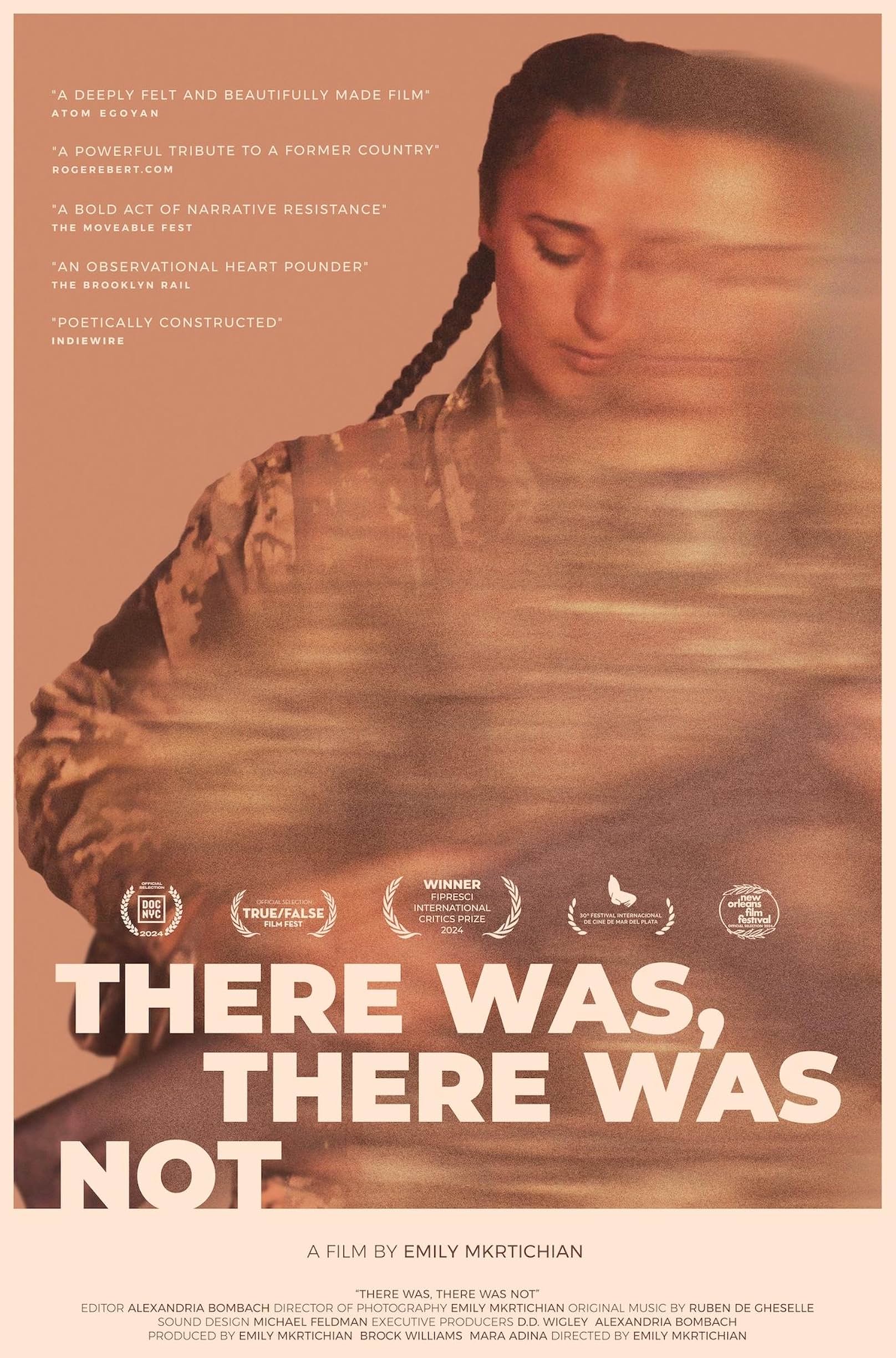“There Was, There Was Not” (2024), linum e chi linum, is the equivalent of “once upon a time” for Armenians. Writer and director Emily Mkrtichian makes her feature debut with a lyrical documentary that focuses on four Armenian women who live in the Republic of Artsakh before it ceased to exist on January 1, 2024. The filming took place in 2018 and 2020, and the movie’s intent shifted midstream from a story of women after a country recovered from war to a country under siege ending in exile for all surviving Armenians.
In the interest of full disclosure, I did not come to this movie with an agenda. I am an ignorant American who knows almost nothing about the region and probably could not point it out on a map. I am aware of the still existing controversy of stating the mere existence of an Armenian genocide during World War I, but not that a whole nation got erased in my lifetime, and that this genocide is not history but continuing today. Also, considering what is happening in the Ukraine, it is impossible not to be stunned that the Russians are framed as peacekeepers that prevented this conflict from getting worse. This film is told from the Armenian perspective, not Azerbaijan. I am a movie reviewer so if there is a movie approaching the subject from the opposing side, and it sounds interesting, I will check it out, but I am not a journalist or the arbiter of truth, so I do not feel compelled to search for one. If a movie crosses my path, and it piques my curiosity, I watch it if time permits. “There Was, There Was Not” appealed to me because of the poster art of a woman in camouflage during wartime, and documentaries do not get enough coverage. It was only while watching the film that I realized it aligned with another interest: indigenous stories.
Mkrtichian sets out to tell a true story like a fairy tale, but for the viewer, “There Was, There Was Not” feels like a time capsule or a memorial as she captures a slice of life before, during and after war time and as a primary document that proves that Armenians existed in Artsakh. She briefly links her story to the four women with the way that she prepares a warm beverage: the tools, the technique, etc. She shows the common thread between diasporic and indigenous Armenian women: home and community, indoors and out. There is a theory that all art falls into at least one of four categories: pre and post fall, heaven and hell. The first section is supposed to be a tale of quotidian heaven where the characters live normal yet remarkable and unusual lives.
Sveta Harutunyan is a de-miner because the income in such a hazardous field is enough for a single mother to support a family—she has three daughters and a cat. (Is the cat ok?) Government worker turned politician Siranush Sargsyan is the image of a cosmopolitan, chic career woman who would fit right into any major world renown city. The youngest of the four, Sosé Balasanyan, is the woman featured on the poster, but at the beginning of the film she is a childlike, intense Judoist with Olympic dreams. Gayane Hambardzumyan presents as an unassuming family woman with a drafted son serving in the military, decades of marriage to her husband and a daughter who helps her with her work. It turns out that Hambardzumya is the most radical of them all as the founder of the sole Women’s Center to fight for women’s rights against the patriarchy in practical ways by helping women escape abusive homes. Her stories hue closest to what moviegoers may expect about women in precarious circumstances as she describes the intimidation that she alleges her government directed at her.
The underlying suspense of “There Was, There Was Not” is how their lives will change because of the war. Breathe a sigh of relief because though devastating and conclusive, it never reaches Nanking levels of graphic atrocity. Mkrtichian often depicts heaven in a series of still life shots to document quotidian household objects and activities. War is not characterized with the usual sensational images so if you are afraid of seeing dead bodies, hearing accounts of sexual violence or other traumatizing events, you can set those worries aside. It is a quiet movie. The most that Mkrtichian offers is shaky cams and some explosions. Instead, she focuses on the separation of people from the people and activities that they love. In the first act, a series of photos are shown in a montage telling the life story of the evolution of the Hambardzumya family from the end of the last war in 1994 through 2018. In the war section, her husband and she cannot communicate at the same table, only through FaceTime. Just offering hospitality to a guest is another symbol of expulsion from Eden. Mkrtichian often rewinds her footage to reflect how her four subjects want to return to that time not live in the present, and each section is punctuated with post-war interviews set on the bucolic countryside with every participant in the same place.
While “There Was, There Was Not” is a poignant work that focuses on the human side of war, not the portions that would attract minimizing cable news networks, it could still prove challenging since the narrative is lyrical, not structured, and without narration or context. It means that some aspects of the film will go without explanation, and you will just need to empathize with the people on screen. With the filmmaker as a part of this film whom the interviewees visibly interact with, this film can be considered a participatory documentary otherwise her influence on the trajectory of the story is invisible, and according to her, unexpected and out of her control since she never expected that war would break out during production.
It is frustrating when the filmmakers stick to observing and do not push more to elicit answers. For instance, like a lot of young people, Balasanyan is fervent about whatever she chooses to pursue, but a woman on the frontlines in a coed unit, which is the impression that is given, seems dangerous in terms of the possibility of, let’s say, friendly fire. She sounds rehearsed and like a mouthpiece for propaganda. A person could leave of “There Was, There Was Not” questioning why she is vulnerable to sacrificing herself to a cause. Also it was disappointing not to get more coverage showing how the ones who relocate to Armenia during wartime get acclimated instead of hearing about it.
“There Was, There Was Not” is not for everyone because it is a foreign film with subtitles, the story feels unstructured without guiding the viewer in painful detail how to feel, and the deliberate pacing could be challenging to people at home tempted to multitask. Still, it is the kind of film that is valuable because it captures the existence of a lost civilization. The apocalypse happened, and the world kept spinning.
Random side note: In “The Teachers’ Lounge” (2023), the Polish protagonist prefers to speak the language of the dominating force, and one random Polish guy at the club prefers to speak Russian, he claims, so he can broker peace. It feels unusual for people to jettison their mother tongue in the twenty-first century.





